#go read the romero script by the way it’s actually really good
Explore tagged Tumblr posts
Note
do you know if the redfields are supposed to be native in the remakes? i noticed claire’s necklace in the re2make and couldn’t find anything online about it
In terms of “supposed to be” I don’t think they are, at least, nothing in canon intends to portray them that way, similarly to how nothing in re canon intends to portray Jill as having Japanese heritage despite a single press release that came out nearly 30 years ago.
That said, I do like the concept of the Redfields being native (gd knows this series could use more diversity) and it has the potential for deeper storytelling and themes esp since the (INTENDED) antagonist of this series is racism and eugenics, and even Chris’ and Claire’s story specifically could take on a new meaning with them being native (especially since Chris’ biggest foe is Mr. Ecofascist man).
Not to mention, the idea of the Redfields being native isn’t a new concept either, even if it doesn’t come from the games. In the George A. Romero script for his live action Resident Evil movie (something we unfortunately never got to see), Chris was actually supposed to be part native, specifically of Mohawk descent.

And as seen in the line that brings it up, that specific heritage seems to play into his character and personality. His ancestry means he doesn’t let his confusion show.
This moment as well, I believe, is meant to relate to his native heritage as well:

Not to mention this in the script, while not dialogue or a specific action, still is intentional in the writing


And yeah, the fact that Chris is Native American Mohawk gets brought up throughout the story, actually, it isn’t just a one off mention
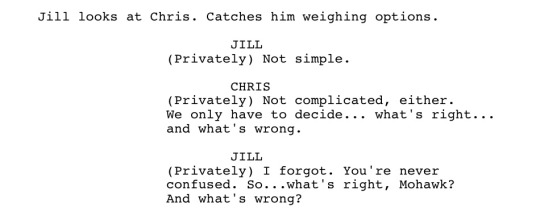

And the story mentions his connections to Arklay and Raccoon City as the land he grew up on (especially his farm) and he gets sentimental watching it all get blown up at the end. Honestly I really like the Romero script it would’ve been fun to see on the big screen.
Wrt what you said about Claire, other people have noticed the necklace too. Specifically this Quora post goes more in depth about it and specifically the Mohawk tribe. Although the Mohawk detail is specific to the Romero script, I just found the detail interesting here.

So like, is it canon? No, far from it. Would it be way more interesting if a detail than anything the remakes have given us thus far? Abso-fucking-lutely. It’s an interesting headcanon and could be done really well if put in the right hands. Just not Capcom’s.
#sid answers#anon#resident evil#claire redfield#chris redfield#go read the romero script by the way it’s actually really good
20 notes
·
View notes
Text
Some late Halloween recommendation
(Seizure Warning)
Happy happy Halloween,
Halloween,
Halloween,
happy, happy Halloween,
fuck you Dobson!
Well, haven't talked for a long time, haven't I?
Things got busy again the last couple of weeks and with the sort of posts I am working on being rather long + spending my off time from work on other things than somethin Dobson related, I couldn't bring much to the table.
That said, next month something really big is in the making, starting from November 2th. Other than that, I kinda thought I want to do something small, non Dobson related for the holiday..
So in case some of you are looking for some Halloween related fun to spend the next 24 hours with, I thought I recommend some minor movies and other horror related things you may hopefully enjoy.
So let's start
Creepshow (1982) & Crepshow 2
youtube
I am a huge fan of horror anthology movies and Tales form the Crypt like stories (comics and tv show), so when I heard that Stephen King wrote a script for a comic like horror movie in the 80s, directed by George Romero, I was kinda hooked up.
Creepshow is something of a hidden gem people are becoming more aware of nowadays thanks to the internet, popculture and the fact, that on Shudder there has been a tv series based on the concept, that currently runs for 4 seasons. And while the quality of some episodes is varying, it is a lot of fun to watch. Particularly the one episode that is literally Bob Ross fighting the Deadites from Evil Dead.
As for the movie that started it all, separated in five little stories, the movie has something from everyone. From a multibillionaire finding himself attacked by cockroaches in his apartment, a zombie wanting cake for father's day, to a henpecked husband exploiting a weird monster to deal with his bickering tramp of a wife. I know the movie was once on completely for free to watch on youtube, but unfortunately I couldn't find it for this entry as quickly. That said, have the still good, though moref flawed sequel here
youtube
The Night of the living dull
youtube
still one of the funniest jabs at really awful fans, related to my favorite cartoon from the 90s. If you can find more of the Nightmare Ghoulery online, I highly recommend it.
It is still better animated and way funnier than the actual Tiny Toon reboot we got last month. As evident by that opening alone
youtube
Franken Fran
Imagine if Frankenstein created a slightly cute teenaged girl who is a masterful surgeon and biologist/genetic engineer, who tries to help other people with her operations. Only for things to go ever so slightly wrong for the people involved in it. Partly because Fran doesn't care for either good or evil, just science, partly because they kinda deserve their ironic fate.
For friends of horror anthology stories and people who want to laugh at Kamen Rider in a certain way, for free to read here
This
youtube
considering I am on tumblr, I don't think I have to introduce you to Helluva Boss. So let me just more or less out myself as a fan of it too. I may think it is in part flawed (the people behind it certainly love to overindulge themselves in musical numbers and gay fluff, while I just wished there was a bit more cartoonish killing), but I have quite a bit of respect for the quality of the animation and some of the ideas going into it. Plus, related to the linked episode itself, "2 Minutes Notice" really slaps and it is obvious, that Alex Brightman has a lot of fun here. So alone for that I recommend you watch the episode.
Deadstream
youtube
Imagine Evil Dead 2 mixed with your average youtube douchebag prankster getting his comeuppances. One of the best movies I watched last year, Deadstream is about Shawn, a failed youtuber trying to restart his career by spending a night in a haunted house. Only problem, not only is Shawn something of a slightly dumb piss ant who recognizes red flags way too late, the house really is haunted and the ghosts are certainly not friendly or in need of help at all. While "low budget" by certain standards, the movie has some really great practical effects and decent scares, but also some really great black comedy and slapstick mixed in, without ever really going into full on Scary Movie cartoon-esque antics. Also one of the few movies, where the concept of "livestreaming" is actually utilized extremely intelligently for the sake of the movie's style. As far as I know it is watchable on Shudder, so please. go see it
Negaduck
He is the terror, that schemes at the night.
to wrap this post up, a little still ongoing thing in the world of cartoon related comics. Currently published by Dynamite Entertainment in colaboration with Disney, Negaduck is a tie in series to the current Darkwing Duck comics, focused on one of Darkwing's most popular villains. His personal archrival (and I think multiversal evil counterpart, to me they were always a bit vague with that in my opinion) Negaduck. surprisingly well drawn, this comic manages to capture the cartoonishness of the cartoon in vibrant colors and makes Negaduck a lot of fun, when he tries to come up with an ultimate scheme and in his quest ends up going on a treasure hunt for King Midas' gauntled. You can read the first two issues of more hopefully to come here.
Now with that said, I am off to a party with friends and playing some Luigis Mansion 3. HAPPY HALLOWEEN AND HAVE SOME CANDY
#halloween#happy halloween#helluva boss#creepshow#negaduck#adobsonsartwork#andrew dobson#soyouareandrewdobson#syac#Youtube
7 notes
·
View notes
Text
The director Joel Schumacher has passed away, and everyone's reactions have boiled down to two topics: 1.) "He was the guy who made the bad Batman films," and 2.) "Hey, he did lots of great films besides the bad Batman films!"
Thing is... I get it. I remember being a teenage comic fan in the 90's. Not just any comics: especially Batman! But ESPECIALLY Bart especially Two-Face. I remember how "Joel Schumacher" was a name that could invoke white-hot rage in myself and everyone in the fandom. He was our modern equivalent of Dr. Fredrick Wertham, the boogyman who had (far as we were concerned) single-handedly destroyed the mainstream credibility of superheroes.
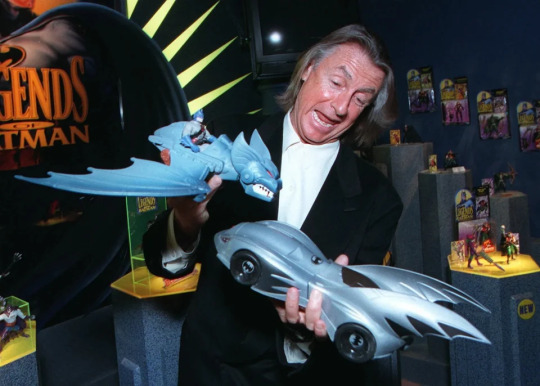
Look at that picture, and try to imagine that this was the face so loathed and mocked by Batman fanboys in the 90′s.
Never mind that Schumacher didn't WRITE the Batman films. The main credit for that goes to Akiva Goldsman, who has gone on to win an Oscar and continues to find A-list success despite ruining other geek properties like Jonah Hex and Dark Tower. Never mind that Schumacher was at the mercy of producers who wanted the movies to be nothing more than merchandise machines and toy commercials. No, Schumacher was the only name associated with the films, and he was cast at the villain.
The fact that he was openly gay played no small part in making him an easy target.
One year after the disastrous release of the infamous Batman & Robin, the beloved fan-favorite cartoon Batman: The Animated Series (then rebranded as The New Batman Adventures on the WB network) produced an episode that featured a pointed jab at Schumacher. The episode was titled "Legends of the Dark Knight," a reworking of a classic 70's Batman tale where a group of kids share their own ideas of what the mysterious Batman is really like.
Halfway through the episode, the kids are overheard by another kid, who shares his own ideas about Batman. The kid, whose name is Joel, has long dirty-blond hair, and works in front of a store which bear the sign "Shoemaker," despite clearly being a department store. He waxes dreamily about the reasons he loves Batman: "All those muscles, the tight rubber armor and that flashy car. I heard it can drive up walls!"
This last line--a reference to a silly bit in Batman Forever--he says as he flamboyantly tosses a pink fur stole around his neck. To drive home the joke, one of the kids dismisses, "Yeah, sure, Joel."
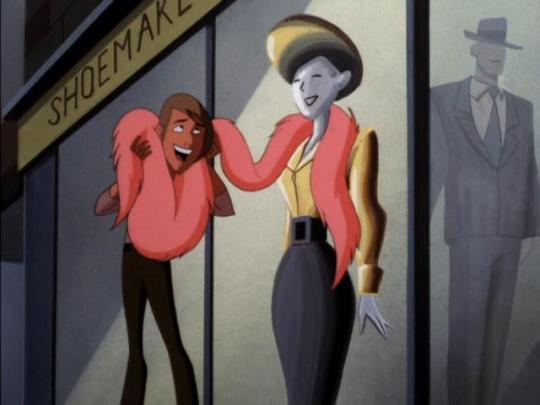
At the time, it seemed like a cathartic joke for us REAL Batman fans. Now, it's clearly just cheap and gross. Instead of any actual criticism about the films, Joel Schumacher was just seen--even if just subconsciously--as the fruit who ruined Batman.
Over time, the hatred for Schumacher lessened. Starting with Blade, X-Men, and Spider-Man, on through to Batman Begins, Iron Man, and onward, superhero movies became huge mainstream successes, with greater fidelity to the source material than most adaptations we saw up to the time that Schumacher "killed" the superhero movie. There was no point in hating him anymore, if there ever was (again, Goldsman more deserves that ire, if you're gonna be angry about anyone. Why does he still get work?! WHY IS HE NOW WRITING FOR STAR TREK?!?!).
But even still, especially among Millennial and Gen-X fans, Schumacher is still--at best--considered a low point for fandom. Even though the same generations have come to appreciate and love some of his other films, such as The Lost Boys, Phone Booth, and the chillingly-prescient Falling Down, there's still this need for people to dismiss the Batman films as embarrassments that are best forgotten in favor of Schumacher's better films. And if they're to be remembered at all, it's to trash them all over again in a tone suggesting that the films are objectively, irredeemably bad.
Except they're not. Oh sure, if you go in looking for a grim and gritty capital-M "Mature" take on Batman, of course you'll hate them, just like you probably also hate the Adam West Batman show. Remember, that show also used to be hated by decades of Batman fans because of how it didn't take the comics seriously.
... except it did. The show was VERY faithful to the Batman comics of the 50's, which often out-weirded and out-sillied its TV counterpart. If anything, the show made some of those stories even more entertaining with camp value and jokes that added different levels of enjoyment to the adults watching. Comic fans resented how Batman became a pop culture joke, and increasingly fought against anything that was colorful and campy (which makes me wonder if this might also be related to latent homophobia). Whether or not they admitted/realized it, the Batman fans of the 70's and 80's carried a chip on their shoulder about a show that DARED to make Batman FUN.
And really... how is that any different than Schumacher's two films?
You don't have to agree, but I think Schumacher's films are fun. I think Batman Forever is highly entertaining, that Tommy Lee Jones and Jim Carrey are bringing their hammy A-games as much respected actors like Burgess Meredith and Caesar Romero brought to their roles. Same goes for Arnold and especially Uma in Batman and Robin. They KNOW what movies they're in, and they're all having a blast.
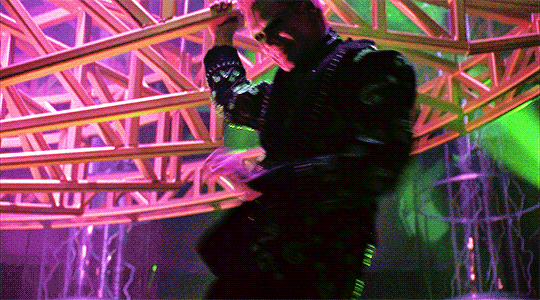
(How many of us remember the exact line Eddie says at this moment? I bet you probably do too, which should tell you something about how memorable this movie is)
Now, BF and particularly B&A are by no means GOOD movies, but you can't tell me that you couldn't have a blast putting the latter on at a party and riffing it with friends. It's not a pretentious, ponderous, self-serious slog like, say, the shit Zack Snyder cranked out (apologies to the one or two cool Snyder fans here, I just find his films interminable). Even besides the many things I could say to defend Schumacher's Batman films (that's a whole other essay), you can't say they were boring. They were entertaining, even if on a level of making fun of the film, and that is NOT as easy as it looks.
Let me put it to you this way: Batman Forever has, objectively, one of the worst takes on Two-Face I've ever seen. He's one-note, he's kind of a rehash of Nicholson's Joker, he gets completely overshadowed by the Riddler, he gets killed by Batman in a way that completely betrays the whole “DON’T KILL HARVEY” arc with Robin, and worst of all, he CHEATS on the coin toss. That alone would be enough for me to condemn this depiction in any other Two-Face story.
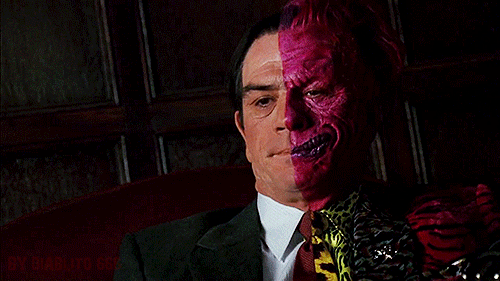
And yet, even I--the most passionate, opinionated, and picky Two-Face fan you will EVER know--still have a soft spot for Tommy Lee Jones' take on ol' Harv. He’s just too fun, too flamboyant, too damn extra not to love. If only all bad takes on Two-Face could be this fun!
But that’s the thing: it’s not because the script was good. Oh god no. I've read the script, and if it were put on the page like a comic, I would have hated it just like any other bad Two-Face comic. I have to imagine that, as director, Joel Schumacher deserves the bulk of the credit for pushing the restrained and laconic Tommy Lee Jones into that oversized performance, and making it a delight to watch despite everything it does wrong.
I'm rare for my generation to have learned how to stop worrying and love Schumacher's Batman. But the younger generation, the up-and-coming Gen-Zs getting into Batman, don't share the same grudges we did. There's a genuine, shame-free enjoyment of those films among The Kids, many of whom are LGBTQA+, who love the jokes, the silliness, the camp, the Freeze puns, the swag of Uma Thurman, and the homoerotic subtext between Two-Face and the Riddler. Maybe it's just a reaction to so much GRIM, SERIOUS shit that DC and their fanboys are trying desperately to push even today.
But comics--especially Batman--have a long history of colorful, stupid, fun shit. Schumacher's films carried on in that tradition, and they should be appreciated on their own merits by those of us who aren't limited by narrow ideas of what Batman "should" be, and who still remember how to have fun.
Schumacher's Batman films should no longer be seen as embarrassments. They didn't ruin superheroes. They didn't ruin Batman. They didn't even ruin Two-Face. Nor should they be disregarded in favor of Falling Down, like losers in a respectability competition. They're fun. They're entertaining. And they didn't pretend to be anything else.
And if you still think they're bad... I mean, objectively, you're not wrong! But be mindful of the reasons WHY you think they're bad, because on another subjective level, you may not be right either. And it's certainly not worth holding a geek-grudge over after twenty-five years.
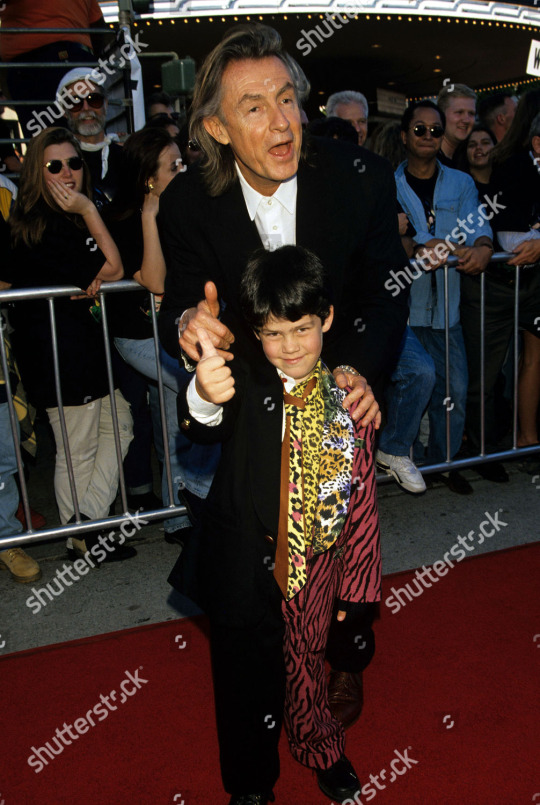
887 notes
·
View notes
Text
Carnival of Souls: Facets of Film
The chief difference between watching a movie and reading a book is that in one, you have to make up your own visuals (unless you’re reading a picture book), and in the other, you get to see someone else’s visuals. This can be either an advantage or a disadvantage, and the difference is made entirely thanks to the production team.
The people behind the camera who make the film work have quite a job on their hands. Once the parts have been cast, the script written, and the locations selected, all that’s left to do is absolutely everything else, ensuring that the project is suitable for release. And of course, as you probably know, this isn’t exactly a cakewalk.
A lot goes into making a movie into a movie. There’s set design, music, camerawork and editing, costuming, performances, special effects, and it all has to come together in a consistent way that’s genuinely entertaining. It is these elements, these ‘facets of film’, that can take a movie with great characters and a good script, and turn it into an unforgettable masterpiece. This is the segment of filmmaking that lends us the unforgettable score of Jaws, the unbelievable visuals of Blade Runner, and the fantastic camerawork of The French Connection. This is the storytelling shorthand that makes a movie memorable, that helps give the audience all of the information they need to have without spelling it all out in dialogue.
The mark of a truly great filmmaker is one who knows how to use these aspects of ‘storytelling shorthand’ well, not simply competently. It is this movie-maker who understands the elements of his movie, and knows their places. Too often, the mistake is made of focusing the film’s time and energy in the wrong place: the trimmings, instead of the tree. It’s a common error, one that becomes more and more obvious as the range for special effects increases. The temptation to put the focus on how a movie looks and sounds takes over, and before we know it, the movie that we’re watching becomes more concerned with being a huge, visual blockbuster extravaganza.
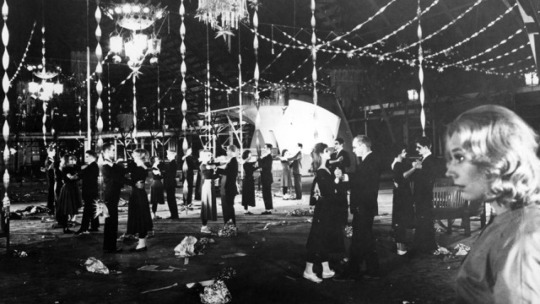
Now, there’s nothing wrong with being a huge, visual, blockbuster extravaganza. It’s these types of movies that make movie history, movies like Jurassic Park, Star Wars, or Back to the Future. But those movies all had something in common: a balance.
In the movies listed above, in the best movies, the visual storytelling doesn’t overshadow the story it’s trying to tell. Even more subtle films like Casablanca use their camerawork extremely effectively, without making it the point of the movie. In short, the trimmings of film are there to accentuate, methods used to tell the story in the most effective, and best looking way possible, without losing sight of the point: the characters and story.
It is those elements that we’re going to be examining today, figuring out the answer to a question: Does Carnival of Souls use its ‘facets of film’ wisely?
Let’s take a look, starting with an element that can occasionally be overlooked: the camerawork. (Possible spoilers below!)
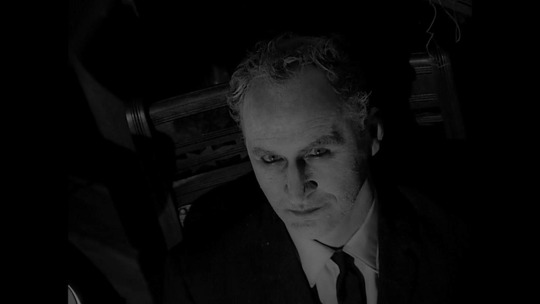
A camera in the hands of a competent director looks good. Unremarkable, but good. It is when it is in the hands of someone who knows what they’re doing that elevates it into something remarkable, using angles, lighting, and different shots to capture the look of what the director is looking for.
As it turns out, the camerawork of Carnival of Souls is one of its best features.
The camerawork in Carnival of Souls is utilized very cleverly. Director Herk Harvey knew how to use a camera to heighten the sense of the uncanny, using shadows and close-ups to capture the eerie atmosphere that hangs over the entire movie. The camera is alternatively uncomfortably close and far away, letting the audience experience Mary’s terror and isolation. Add onto that the brilliant use of unconventional angles to frame our protagonist, and we’ve got ourselves a really interesting series of shots.
There are a few examples that stand out more than others, of course. Especially interesting is the imagery of Mary at the organ, looked down upon by the audience as she plays in the center of a web of instrument, almost swallowed up. Another excellent example is any of the scenes involving Mary’s visions. The shots of the undead rising from the water to twirl in the pavilion are eerie, creepy, and weird, only further emphasized by the off shots of Mary’s ghoulish doppelganger.
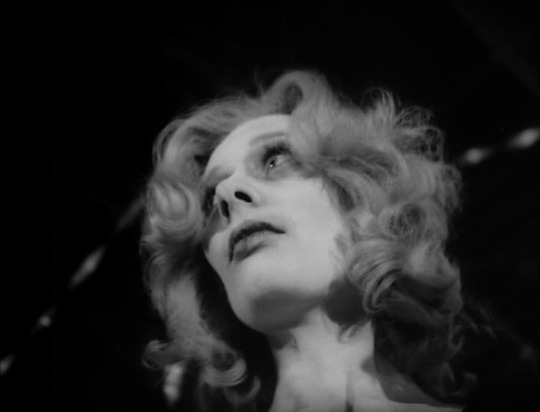
Also of note (and my personal favorite) is the near-dizzying shot-reverse-shot of Mary, looking down the staircase at the boarding house, and spotting The Man on the ground floor, looking up at her with that Slasher Smile. It’s a legitimately chilling moment, only heightened by the brilliant use of the camera, intensifying the close-up.
Of course, camerawork alone doesn’t set a mood. The music has quite a lot to do with it as well.
The soundtrack for Carnival of Souls is extremely simple: it’s organ music. Fittingly enough, as that’s Mary’s profession, and it enables her to take part of the soundtrack. It almost plays a part in the story, first haunting her radio so only creepy organ music is playing, and then seemingly possessing her as she plays a wild, weird song on the church instrument, accompanying the visions she’s seeing of the undead in the pavilion.
Of course, there are also times where there is no music at all.
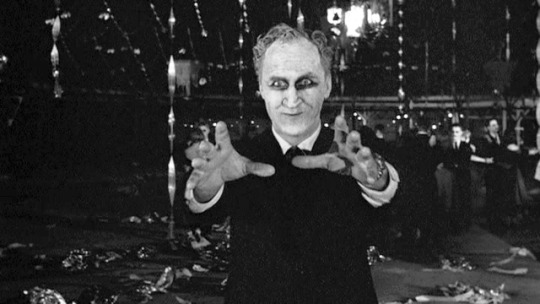
The scenes where Mary explores the abandoned pavilion are rather quiet, silent so that the audience can hear the strange noises at the same time that Mary does. This emphasizes, again, that ‘off’ feeling, increasing the audience’s awareness of the ‘uncanny’. The eerie music, paired with the creepy, surrealist visuals, make a chilling combination, further heightened by the sets and makeup.
There isn’t much ‘memorable’ where sets are concerned for this film. The film was shot on location, with the buildings left as they were. Even the pavilion was an actual abandoned Mormon dance hall that director Herk Harvey found. The way these settings are shot definitely heightens the scare-factor, as the locations are typically rather sparsely populated in the film, and often filmed to accentuate the shadows that increases the creep-factor of the film’s mood as a whole.
Of course, it helps if what’s in the setting is just as creepy as the setting itself. Luckily, the makeup artists knew how to make a movie monster on a budget.
Unlike the masterpieces like the Frankenstein monster or the Wolf-Man from Universal’s golden horror years, there’s not a whole lot to The Man’s appearance, or the appearance of the army of the undead. They look like our traditional zombies: pale faced, black-eyed, and awkward moving, nothing if not persistent. Ironically, Carnival of Souls pre-dates most zombie movies by a good handful of years, and in fact was the primary inspiration for George A. Romero’s zombie-codifier: Night of the Living Dead, which came out six years later. Naturally, this means that Carnival of Souls must have been doing something right.
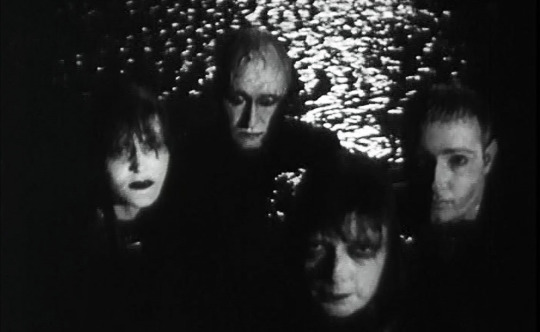
It was.
There’s a reason the ‘zombie look’ so familiar now is so iconic, and that’s because it works. Carnival of Souls hit that perfect balance of human and not, adding to the gothic look of the film. The result is a genuinely odd-looking menace, albeit one without much in personality.
All of these features come together to create something legitimately important in the realm of filmmaking: a great look.
One of the ways that a film can truly stick out among the thousands is having a truly distinct look, and in that, Carnival of Souls succeeds. Taking a page out of The Cabinet of Dr. Caligari’s book, the bizarre angles, weird music, and uncanny staging and sense of isolation truly emphasizes the surrealist horror of the film, making an otherwise okay film truly memorable. Even without any special effects to speak of (besides the makeup, again, this movie was extremely inexpensive), the visual style of this movie almost seems like an arthouse film, helping it to stand out among the hundreds of horror films made before and since. Every shot and every note of music is all pointing to one thing: something is not right. Mary Henry never has to express this aloud to the audience, because we already know, from all of these hints, that the atmosphere is tense, that she should be frightened.
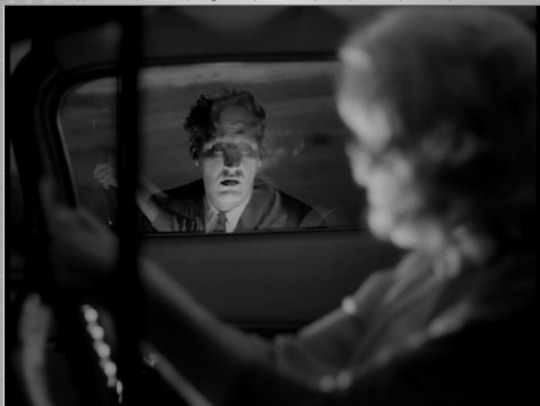
But there’s more to a movie’s ‘storytelling shorthand’. All of the atmosphere in the world doesn’t do you any good unless it’s paired with some compelling performances.
Candace Hilligoss was the only professional actress in the entire cast, and it shows. That may sound harsh, but not only is it true, it’s actually not a bad thing. The slightly ‘off’ acting of most of the other performers really adds to that sense of uncanny, the sensation that something is wrong. It also has the added bonus of further making Mary seem out of place, isolated, as though she is not welcome and does not belong. It’s an extremely striking effect, off putting in the best ways.
As for Candace Hilligoss herself? Honestly, she does an extremely admirable job.
Hilligoss is the centerpiece of this movie, capturing the audience with her wildly swinging performance. Without much personality to work with, she portrays an unnatural character held at a distance from the rest of reality, alternating between being detached and alone, and terrified of the isolation, and of visions pursuing her. In hindsight, the twist that Mary is dead makes a lot of sense, and a lot of it is thanks to Hilligoss’s masterful acting, lending an unforgettable Haunted Heroine performance to an otherwise bland character.
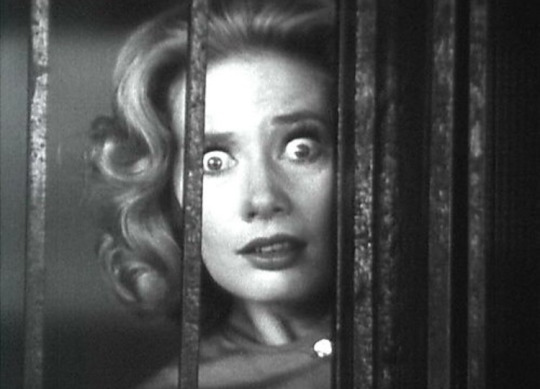
Every element utilized in this quirky little film comes together perfectly to elicit the desired emotions from the audience: discomfort, unease, and fear, which is very much the point. Without much of a budget or access to materials that made other horror films unforgettable, the crew behind Carnival of Souls worked with what they had to create a genuinely disturbing surrealist horror film, full of clever scares to please any horror fan. The sum is truly greater than the parts, fitting together to make up this cult horror classic that’s been remembered fondly, albeit a little late, for several years, and will continue to be remembered for several more.
Thank you guys so much for reading! Don’t forget that the ask box is always open for questions, suggestions, discussions, or just saying hi! Join us next time where we’re going to be discussing the behind-the-scenes story of Carnival of Souls in ‘Facets of Filmmaking’. I hope to see you there!
#Film#Movies#Carnival of Souls#Carnival of Souls 1962#1962#60s#Horror#Mystery#PG#Candace Hilligoss#Sidney Berger#Herk Harvey
4 notes
·
View notes
Text
The Return of the Living Dead (1984)
“Why do you eat people?”
“Not people. Brains.”
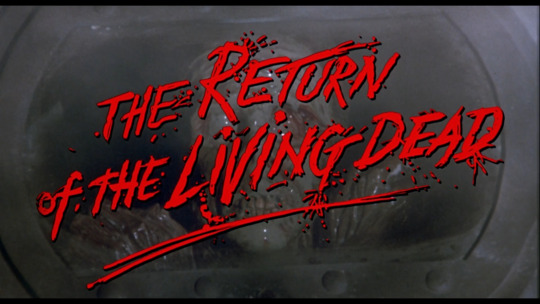
—————————————
The army accidentally sends a tank containing the mysterious chemical 245-Trioxin to a medical supply warehouse in Kentucky. But when the tank springs a leak the dead begin to reanimate and go on the hunt for human brains!
—————————————
Fright: 2 / 5 Dead-end Jobs
Personally I find this one to be too over-the-top to be particularly scary. But there certainly are some creepy scenes, especially for those with lighter tolerances for scares.
But generally most of the scares the movie has come more from a spooky sight or a creepy idea than from a constructed atmosphere of fright.
Admittedly I could see it contributing to someone’s fear of their basement though. Because if I saw a tarman zombie lurch out of the shadows in my basement I would lose my shit.
Gore: 3 / 5 Brains
As you can expect from a zombie movie, there’s some gore.
Although the gore is a bit tame by today’s zombie movie standards. There’s just a few scenes that are going a long way to tip the ratings scale higher than the majority of the film would otherwise warrant.
[Expect a little blood, a medical model of dog that’s been laterally bisected to show interior anatomy, two spooky-looking reanimated corpses that get a fair bit of screen time and received a lion’s share of the effects budget, a shot of some brains, some people getting bitten into, and what I can only describe as a scene where pacman gets his head sawed off.]
Jump Scares: Almost none
There’s one scene where they have a bit of a “Surprise!” moment. But that’s about as far as it goes. There isn’t anything that I’d consider a heavily constructed “I’m gonna make this audience jump so hard!” jump scare.
Maybe just a couple light startles.
—————————————
Review:
The Return of the Living Dead is an incredibly enjoyable punk-themed 80s-horror romp and secretly one of the most influential zombie movies ever made.
Thoughts:
In today’s world of horror movies I would argue that there are 3 primary styles of zombies:
Romero
Rabies
The Return of the Living Dead
Romero and company may have created the modern concept of a zombie, but the pop culture image of a zombie is actually a mashup of all three.
For instance?
The dead coming back to life to feast on the living? Romero.
If you get bit by a zombie you become a zombie? Rabies.
To kill a zombie you must remove the head or destroy the brain. Romero. [although it’s an equally efficient way to killing most anything.]
And last but not least, the one that is utterly unique to The Return of the Living Dead:
BRAINS!
Even though zombies are now famous for their love of eating brains, it’s a feature that is exceedingly rare in zombie movies. And it started right here!
With this very movie!
I bring up this bit of trivia because, a) it’s interesting, b) it’s fun to talk about zombies, and c) because it goes to show that The Return of the Living Dead is a movie that plays by its own rules.
And that’s what makes it so much friggin’ fun.
Although it’s also what makes it a tricky film to describe properly.
It’s often described as a Horror Comedy, but I’d say it’s not a comedy in the sense that Shaun of the Dead is a comedy, but more of how An American Werewolf in Paris is a comedy? I'd say it’s more fun than funny.
And it’s not really a straight horror movie like Night of the Living Dead was, because it’s more spooky than scary.
To make it even trickier, I also feel like it sits right near that edge of what separates a really good movie from a movie that’s enjoyable due to how derpy it all is.
You get the sense at times that if they had just played everything as a straight piece of horror it would have been an enjoyable—yet rather cheesy—bit of 80s B-horror.
But because they never take themselves too seriously, all the pieces are allowed to come together. All those moments that would have been awkward or clunky or absurd before, suddenly fit perfectly into place.
Take the character of Trash for example.
Trash is part of a group of local punks and is...uh...pretty open with her sexuality. At one point the group is partying and she starts taking off her clothes and dancing.
When that sort of thing happens in a horror movie it’s hard not to roll your eyes a bit and go, “Oh, jeeeeez. Leave it to a horror movie to throw in some gratuitous nudity.”
But then events unfold and she never really manages to get her clothes back on. And not because she just dies immediately afterward (which is what would normally happen in an 80s horror movie)! It’s just that she never really gets the opportunity.
And thus what would have normally been a bit of gratuitous nudity, is taken to the next level and—whether intentionally or not—suddenly starts to work as an almost satirical look at the way nudity is so often featured in Horror movies.
Basically this is a movie that delights in thwarting your expectations.
Which makes it 80s punk overtones all the more fitting. It mocks authority, loves defying conventions, and embraces a certain style of “we’re all fucked, so we might as well just have some fun.”
—————————————
—————————————
Content warnings: No animals die in the movie but a handful of already dead ones get reanimated, a character spends the majority of the movie naked.
After-credits scene?: None
—————————————
—————————————
Directed by: Dan O’Bannon
[ The Resurrected (1991) ]
Story by: Rudy Ricci, John Russo, and Russell Streiner
Screenplay by: Dan O’Bannon
[ Alien (1979), Invaders From Mars (1986), Total Recall (1990) ]
Edited by: Robert Gordon
[ The Blue Lagoon (1980), Toy Story (1995) ]
Cinematography by: Jules Brenner
[ Teen Wolf Too (1987) ]
Country of Origin: USA
Language: English
Setting: Louisville, Kentucky, USA
Sequels:
Return of the Living Dead Part II (1988) Return of the Living Dead 3 (1993) Return of the Living Dead: Necropolis (2005) Return of the Living Dead: Rave to the Grave (2005)
If you enjoyed this you might also like:
Dead Alive (1992) [a.k.a Braindead] , Re-Animator (1985), Night of the Living Dead (1968), Shaun of the Dead (2004)
—————————————
Context Corner:
First of all, let me point out that I’ve read multiple accounts of people who said Dan O’Bannon was a douche. And judging from interviews it seems that he treated the female actors (especially Beverly Randolph) rather poorly. Not Alfred Hitchcock levels of mistreatment by any means, but still.
Second of all, this film’s existence has a rather strange origin. But it goes a little something like this:
Night of the Living Dead was the brain child of three guys: George Romero, John Russo, and Russell Streiner. After they parted ways (and after some light legal action) Romero got the rights to do his own sequels under the “of the Dead” title, but Russo got the right to the “Living Dead” title.
And so Russo and Streiner decide to write their own sequel to NotLD and it starts to get produced. Dan O’Bannon is brought in to pump up the script and when the film losses its planned director O’Bannon he is offered the position. However, he only does so on the condition that he can do a major rewrite of the film.
The original script was very much a sequel to NotLD, but O’Bannon wanted RotLD to stand out and thus purposefully set out to make their zombies unique and give it all a different sort of tone.
—————————————

“Christ, it ain’t dying!”
“I thought you said if we destroyed the brain it died?”
“It worked in the movie.”
“Well, it ain’t working now, Frank!”
“You mean the movie lied!?”
1 note
·
View note
Photo

For the week of 28 August 2017

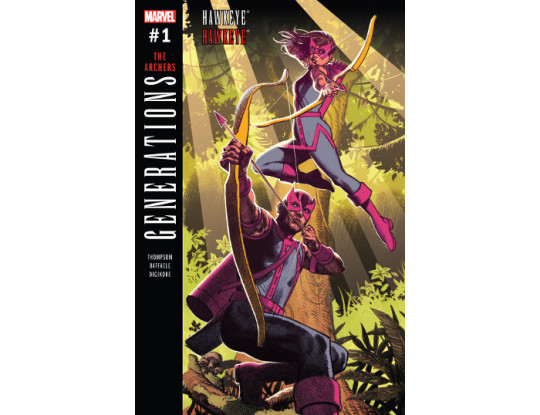

Just one comic stood out as a favourite for me this week; Generations: The Archers - Hawkeye & Hawkeye by Kelly Thompson & Stefano Raffaele. Published by Marvel.

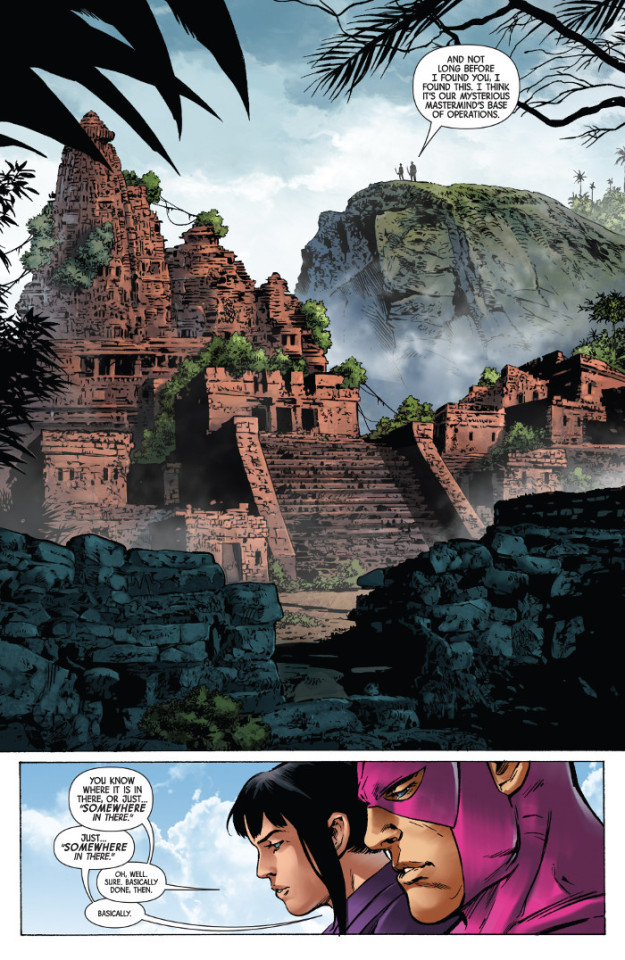

Like the previous Generations one-shots, this follows the formula of a modern day hero sent back in time (or wherever) to interact with their predecessor. Also like the previous one-shots, there’s no explanation as to why or how that’s happening, which is a detriment to the overall plot, but here it’s easy to look past.
The main plot of the issue hinges on a straight-forward enough contest of champions to see the “best marksman alive”, with other characters being drawn to a mysterious island...mysteriously. It’s simple, but it allows Kelly Thompson to do what’s best about this issue and that’s character development. It also helps that there’s a good amount of humour throughout the issue that keeps the dialogue zipping along.
One of the editorial points of the Generations exercise is for modern heroes to learn or be influenced by something from the past (or whenever) heroes and Thompson delivers that in spades with the conversations between Kate and Clint. The mentor/student dynamic is mirrored in the revelation of who’s behind the contest and there’s a nice moment of revelation for Kate.

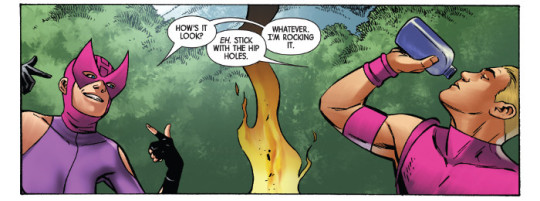

It’s also really nice to see Stefano Raffaele around again. Especially on a Hawkeye story, since I have fond memories of his art on an earlier Hawkeye series he did with Fabian Nicieza. His work is brighter and cleaner here than then, but it’s no less impressive. There are some very nice panoramas and establishing shots amid strong character work throughout the book, aided by a brighter colour palette from Digikore.
Thompson and Leonardo Romero’s Hawkeye series starring Kate is easily one of my favourite books from Marvel right now, deftly mixing humour, character development, intriguing plotlines, and drop-dead gorgeous artwork and page layouts that remind me of some of the highlights from Matt Fraction and David Aja’s Hawkeye, while still having its own distinct voice and purpose. This Generations one-shot is a natural extension of that, essentially being Hawkeye #9.1, or maybe #12.1 since this story is supposed to continue (kind of) in #13. This one really feels essential if you’re reading the ongoing Hawkeye series.
Quick Bits:
Black Magick #7 largely keeps the numerous plates spinning, advancing the various bits in smaller degrees. All of it brought together by some truly gorgeous art by Nicola Scott & Chiara Arena.
| Published by Image



Faith & The Future Force #2 ups the stakes a few times as Timewalker, Ank, Faith, and friends continue to travel through time to try to stop an “evil robot”. It’s still not clear exactly when the present of the series takes place (I’m guessing before Harbinger Renegade #5, but definitely after the end of the Faith ongoing series), especially since other characters are plucked out of different time frames, and we’re still not given any exposition on exactly who this evil robot is and what he’s doing other than messing with time (erasing Adolf Hitler was apparently one of the first things, eliminating the Civil War another), but it’s still entertaining to see them continually throw larger and larger groups at it with reckless abandon. It’s a fun way to “kill the Valiant universe” without actually killing the Valiant universe.
| Published by Valiant

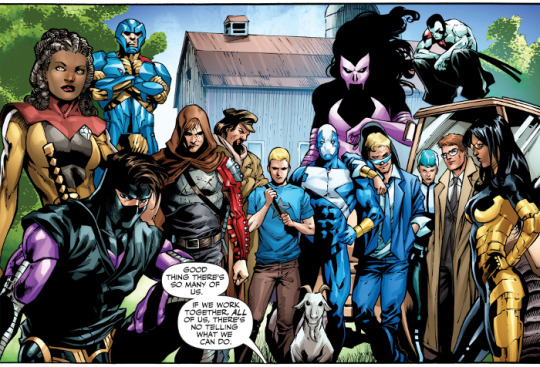

Jean Grey #6 is the first of two X-dips into magic and the supernatural this week, with young Jean turning to Doctor Strange for help in her trip of self-discovery and preparation for the oncoming Phoenix. We also get to see which “spirit” has been dogging Jean since the first issue. Maybe. I say “maybe” because since the first issue Dennis Hopeless has largely been setting up the possibility that things might not be 100% real. And maybe Jean is just crazy. That’s unlikely, but it’s still possible.
This issue also features some excellent guest art from Paul Davidson. His depictions of the astral plane and trips through the life and times of adult Jean Grey are worth the price of the book alone. It would be nice to see him get some regular work again.
| Published by Marvel

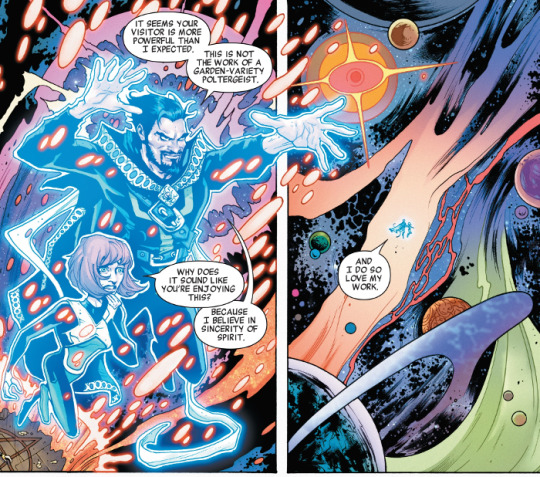

Lady Killer 2 #5 is wow. That’s all I can really say. This is one hell of an explosive end to the series. Joëlle Jones delivers another stunning issue. Do yourself a favour and buy both this series and the first volume. You won’t be disappointed.
| Published by Dark Horse

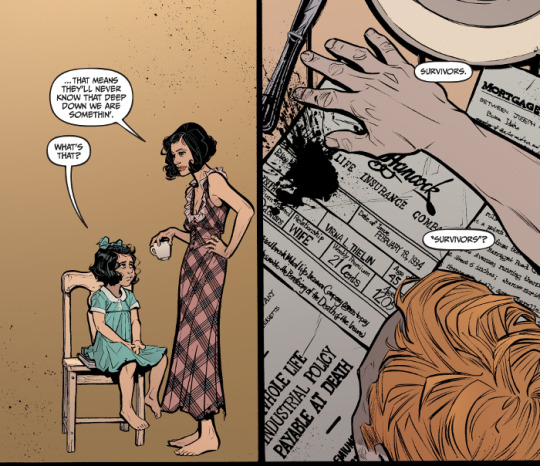

Optimus Prime #10 gets another of IDW’s Hasbroverse titles up to speed for the First Strike “crossover” that is already underway. That several of the other titles are also still out of sync is a similar problem that Revolution had. The stories are usually very good, but shipping late and out of order ruins momentum and important story beats. Read in a vacuum, though, the individual titles are still excellent and this issue of Optimus Prime is no different.
| Published by IDW

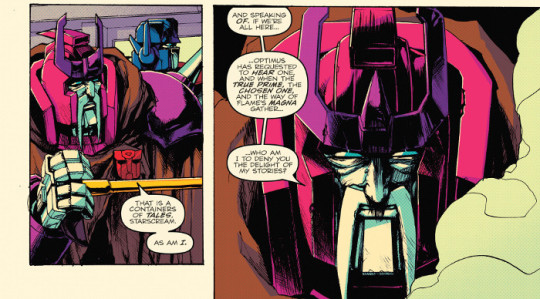

Saban’s Go Go Power Rangers #2, like the first issue, is fun. I was never a fan of the TV shows, but have been greatly enjoying what BOOM! has been doing with the license in comics. Ryan Parrott delivers on a mix of humour, character development, and action, all while Dan Mora continues to show that he should really be one of comics’ breakout talents.
| Published by BOOM! Studios



Spawn #277 continues what is shaping up to be one of the most inventive and compelling runs on the title. The team of Darragh Savage and Jason Shawn Alexander have brought an atmosphere of dread and horror to Spawn that I don’t think I’ve seen since the Hellspawn series. I’m really liking this.
| Published by Image

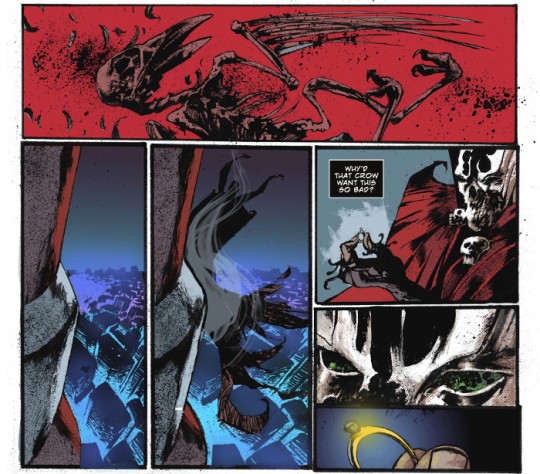

Spider-Gwen #23 is kind of an odd place for a Mary Janes interlude just as the Predators story-arc was hitting a critical point. It’s a decent story by guest creator, Hannah Blumenreich, but it makes me kind of hate MJ. The art is great, though.
| Published by Marvel

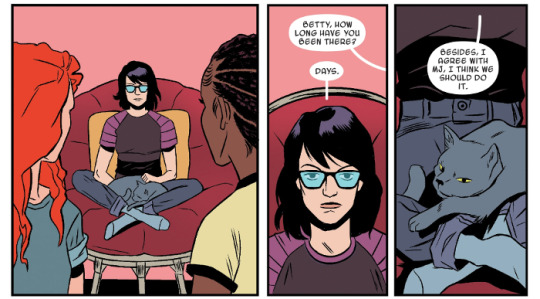

Star Wars: Jedi of the Republic - Mace Windu #1 reminds you that you need more Denys Cowan in your life. His art here is a little more restrained than I’m used to, but it still shines throughout this first issue. There’s also some nice humour peppered throughout the script by Matt Owens that lightens the mood for this otherwise action-packed debut.
| Published by Marvel

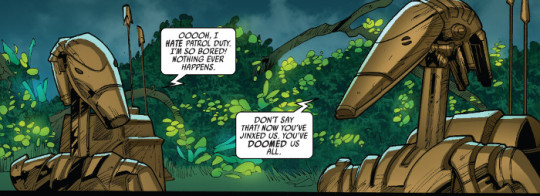

Uncanny Avengers #26, excluding the Generations one-shots, is one of the first post-Secret Empire stories without said branding to deal with the fallout. It also gives a first step to an idea as to where Jim Zub may be going with the book as he makes it his own, bringing Scarlet Witch back into the fold for the first time since I think Rick Remender’s run, a kind of redemptive arc, but I had thought that a lot of the animosity between her and Rogue had been stitched up. Apparently not. Like the ruins of Avengers Mansion their still camping out in, it gives a sense of rebuilding for the team.
It’s also nice to see Zub reunited with one of his Thunderbolts compatriots, Sean Izaakse. I liked his art there and thought it was a shame he only did a couple of issues.
| Published by Marvel

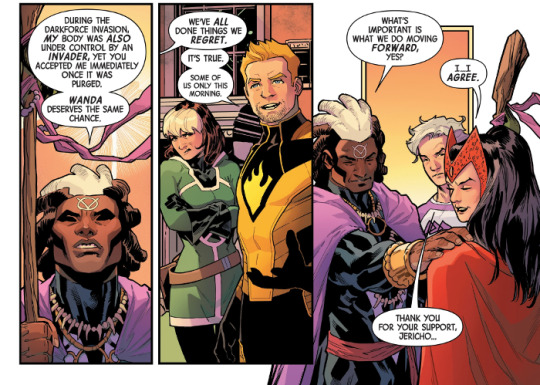

Vampirella #6 extends Paul Cornell’s run on the series by the first of a two-issue arc. It also sees Andy Belanger of Southern Cross take over art chores, which in itself should make the comic an instant purchase. It’s an interesting trip through Vampi’s psyche personified through dream with some really, really nice artwork.
| Published by Dynamite



X-Men Blue #10 is the second of the X-dips into magic and the supernatural this week, as Beast hooks up with the Goblin Queen again. It also brings yet another alternate X-Men team to the title, since the original five and dimension-displaced, mind-wiped mutants from the Ultimate universe aren’t enough. To his credit, though, Cullen Bunn is really making this work. I’m not as keen on another rehash of the Jean/Scott romance plot, with an added Wolverine stand-in for a love triangle, for what seems like the millionth time. Bunn is very good with the characterizations, but seriously I think this plot has been done to death.
| Published by Marvel



Other Highlights: Animosity #9, Bankshot #3, Black Panther #17, Black Panther & The Crew #6, BPRD: Devil You Know #2, Crosswind #3, Deadly Class #30, Deadpool #35, Doctor Strange & The Sorcerers Supreme #11, Dungeons & Dragons: Frost Giant’s Fury #5, Ghostbusters 101 #6, GI Joe #8, The Normals #4, Paklis #4, Planetoid: Praxis #6, Rapture #4, Ringside #11, Saga #46, Star Wars #35, Thanos #10, There’s Nothing There #4, TMNT: Dimension X #5, Victor LaValle’s Destroyer #4
Recommend Collections: Archie - Vol. 4, Bullseye: Colombian Connection, Copperhead - Vol.3, Jupiter’s Legacy - Vol. 2, Magdalena: Reformation, Old Guard - Vol. 1: Opening Fire, The Other Side - Special Edition, Providence - Act 3

d. emerson eddy is unsure what he made anyone do and might like to apologize for it, maybe, but he doesn’t know what it was. Was it the slightly charred red peppers?
2 notes
·
View notes
Text
Day of the Dead: George A. Romero’s Misunderstood Epic
https://ift.tt/30y3Nd2
When legendary horror auteur George A. Romero set out to make Day of the Dead — the third chapter in a trilogy that included the wildly popular and groundbreaking Night of the Living Dead (1968) and Dawn of the Dead (1979) — he envisioned it as an epic conclusion to the story that he first began telling back in Pittsburgh in the late 1960s with a crew of friends and co-workers and a budget of just $114,000.
But the movie that Romero ended up making was not the one he started out with — and even though many were perhaps initially disappointed with Day of the Dead, it’s been re-evaluated over the years by fans, critics, and even by the late Romero himself, who wound up calling it his favorite of the original trilogy.
“When it first came out, the audience was like, ‘What the hell is this?’” says Lori Cardille, the Pittsburgh-based actress who starred as the film’s lead, scientist Sarah Bowman. “They said, ‘It’s too talky. It’s too over-the-top. These actors are too over-the-top. This is not Dawn of the Dead. I don’t know what this is, but it’s not what we expected.’ That’s why it sort of came and went, except for some people that held it and saw it for what it really was meant to be.”
Romero turned his attention to Day of the Dead after the success of 1982’s Creepshow, his collaborative homage with Stephen King to the EC horror comics of their youth. His original script for Day of the Dead was massive — with various drafts running anywhere from 122 to 204 pages — and takes place several years after the conclusion of Dawn, with the human race almost completely displaced by the reanimated dead.
A group of human refugees find their way to a tropical island — after battling both roving bands of humans and zombies — where they discover that a new civilization is rising. The lower classes live above ground in decrepit housing, while cadres of scientists and military personnel live in an underground bunker. The scientists are training the zombies to perform simple human functions — using human flesh taken from the aboveground residents as rewards — and handing them over to the military, who are shaping the ghouls into an army of the living dead.
Ruling over it all from the deepest part of the bunker is a self-styled dictator who lives in lavish style with his cronies and sycophants. But the entire situation, from the sharp division of classes to the brutal system of punishment, is primed to blow, which it does in an incredibly gruesome and explosive final battle in which the “government” is toppled — even as the zombie plague itself comes to an end.
Almost immediately, Romero’s plans for the third movie ran into problems. With an estimated budget of $7 million, it was too expensive for distributor United Film Distribution (UFD) to back — especially if it went out, like Dawn, unrated, which limited the number of theaters that would carry it. With UFD only offering to put up half the original budget — $3.5 million — Romero was forced to sit down and rewrite the script from page one, scaling back the action, the scope and the cast of characters.
Meanwhile, Romero had seen Lori Cardille in a play called Reckless and had her in mind for a major role in the original version of Day. Cardille’s father, Billy “Chilly Billy” Cardille, was a local horror host on Pittsburgh TV and an old friend of Romero who made a brief appearance in Night of the Living Dead. According to Paul Gagne’s 1987 retrospective on Romero’s films, The Zombies That Ate Pittsburgh, Romero at first wanted Lori Cardille for the role of Mary, the lead scientist, before offering her the part of Sarah, then a rebel leader. The two characters were ultimately combined when Romero revamped his screenplay.
Cardille maintains to this day that she was much happier with the version of Day of the Dead that was filmed, since it was less reliant on action and spectacle. “I’m an actress that wants to play cool characters,” she says. “So when George had to pare it down, he was more focused on character, which of course was good for the actors.”
In the filmed version of Day of the Dead, the focus is shifted to the underground military installation, where a small team of research scientists led by Sarah work fruitlessly to find a cure for the zombie plague as the living dead roam in the millions above. They are allegedly protected and supported by a squadron of soldiers, but the latter have degenerated into more or less a band of hooligans led by the megalomaniacal Captain Rhodes (Joseph Pilato). With tensions rising between the two factions, it’s only a matter of time before Rhodes and his men turn really ugly.
At the same time, the eccentric, quite likely insane Dr. Logan (Richard Liberty) is having some success reactivating the dim human memories of a zombie nicknamed Bub (Sherman Howard). The seemingly intelligent zombie recognizes music and knows how to handle certain objects — including, ominously, a gun. But when Rhodes discovers that Logan is feeding Bub pieces of dead soldiers as his reward, all hell breaks loose. The third act features some of the most incredible gore seen on screen up to that time, courtesy of the legendary Tom Savini, who took his makeup effects work to a new level with this film.
Sherman Howard as Bub in Day of the Dead
Day of the Dead began filming in October 1984, with exteriors shot at two Florida locations, Fort Myers and Sanibel Island, and interiors filmed at a limestone mine complex near Wampum, Pennsylvania. “It was grueling, and it was like a three-month shoot,” recalls Cardille. “We took a little break in there for the holidays. But we were in this cave, and we would get up early in the morning when it was dark, go to the cave, where it was dark inside, and then leave again at night, so we did not see the sunlight.”
Read more
Movies
George Romero’s Wife Says He Left Behind Over 40 Scripts
By Matthew Byrd
Movies
George A. Romero and the Meaning of His Zombies
By Ryan Lambie
Cardille says she can still remember the smell of the mines vividly. “We were hunkered down together in this atmosphere, and it did add to it,” she says. “It did permeate us. It’s like the dankness permeated us physically. It permeated our minds and brains, and it helped with the development of the characters and the conflicts, no doubt. The smell was kind of mildewy in a way, and there was always the sound of dripping water. There were 26 miles of lakes throughout this cave structure, so there was this dampness to it… It was actually pretty depressing, but we made the best of it, and we had a lot of fun too.”
Joe Pilato in Day of the Dead
The actress says that the entire cast became “brothers and sisters” while shooting the movie, adding that she became especially close with Joseph Pilato, who died in 2019 at the age of 70. “I got to know Joe well, of course,” Cardille reminisces. “He was a really good theater actor, and he was very, very bright. You could talk about many subjects with Joe Pilato, and he was fun to talk to.”
Cardille adds that she would see Pilato frequently on the horror convention circuit in the years after Day came out, although she laments that the actor’s personal problems eventually got the better of him. “Joe had a drinking problem,” Cardille says. “He was an alcoholic, and that was really tough for him, for his family, for his friends. And I don’t say that as a bad thing. It’s just, he had that illness and that was very painful… I think just in the long run, it sort of wrecked his body.”
On a brighter note, Cardille says she has also kept in touch with actors Terry Alexander and Jarlath Conroy, who played, respectively, the helicopter pilot and radio operator who make it out of the mines alive alongside Cardille’s Sarah. Yet even though the trio survive at the end of the movie and find their way to an uninhabited tropical island, Cardille says there was never really any talk about revisiting the characters to see where they ended up going.
“Sometimes I’d bring it up to George,” admits Cardille. “I said, ‘What about continuing these characters?’ I mean, we’re still alive.” But Cardille adds that the rights to the film and the character are tied up in various ways, making the possibility of seeing them again remote. And of course, Romero himself passed away in 2017. “It would be arrogant of us to do it,” says Cardille. “Selfishly, it would be fun to do it, and I would love to do it, but I would have loved to have done it with George.”
Although we may never find out the ultimate fate of Day of the Dead’s survivors, the movie itself lives on in more ways than one. For example, a lot of the original conception eventually found its way into Romero’s 2005 effort, Land of the Dead, in which Dennis Hopper played the slimy politician who lorded over a crumbling, walled-in section of Pittsburgh from the top of a luxury apartment tower — sort of like the underground kingdom in the original Day, only inverted.
“Once again, (George) was ahead of his time,” says Cardille. “I think of that movie a lot. I think about the wealthy people in the big tower, with the zombies outside and the grunts working to try to save humanity. It’s happening now. It feels like that in America. It is the land of the dead. All the themes are there.”
But Day of the Dead — the movie that Romero made under duress in 1985 — has grown in stature in the 35 years since its release. Although critics at the time did not treat it as kindly as Dawn, and box office was down as well (it grossed around $34 million worldwide, as opposed to Dawn’s $55 million), Day of the Dead has since escaped the shadow of its popular, satirical predecessor and managed to carve out its own space on the top shelf of horror cinema with its bleak, claustrophobic view of humanity turning against itself in the face of almost certain extinction.
“It’s a movie that has to grow on you,” Romero told author Lee Karr for his book The Making of George A. Romero’s Day of the Dead. “I think everybody wanted Dawn…but what I’ve tried to do with all the films is make them different. I mean, that makes it more fun for me.” He added, “I think it’s very much me and…it remains my favorite of all of them.”
“Day of the Dead has become a part of me,” says Lori Cardille, who largely stepped away from acting to raise a family in the years after the movie came out. “When we made it, we knew it was special and we are all still friends 35 years later. That has been a huge gift. Another gift has been meeting so many wonderful people who have been fans of the movie. I’ve learned so much from them. They taught me to appreciate the horror genre.”
Cardille also appreciates that Romero was ahead of his time in his conception of her character Sarah. “It’s also been an honor for me, as one of the first strong female characters in the horror genre, to have served as a role model for other women,” she says. “I’ve been told that the strength displayed by the character, the determination, the persistence, have served as a positive example for many young women in their lives. It is very fulfilling to know that something I helped to create will be a part of film history. I am forever grateful to George and the fans. It was an honor to bring Sarah Bowman to life.”
Watch here for more from Lori Cardille about The Living Dead, the upcoming novel from George A. Romero and Daniel Kraus — completed by Kraus after Romero’s death — that is out August 4. Cardille and actor Bruce Davison (X-Men) have read the audiobook version.
The post Day of the Dead: George A. Romero’s Misunderstood Epic appeared first on Den of Geek.
from Den of Geek https://ift.tt/32J3oHH
0 notes
Text
I Started a Joke
“So, when you find yourself locked onto an unpleasant train of thought, heading for the places in your head where the screaming is unbearable, remember there’s always madness. Madness is the emergency exit. You can just step outside and close the door on all those dreadful things that happened. You can lock them away…forever.”
That dialogue is from The Killing Joke, alternately the best and worst story about The Joker ever written. On its face, the story is simple. The Clown Prince of Crime has kidnapped Commissioner Gordon, and his plan is to drive Gordon mad, proving to both him and the Batman that anyone can lose their mind and descend into insanity. All it takes is one bad day. The best stories seem to be simple, but a little investigation reveals hidden complexity.
That complexity is why The Joker, a character originally created in a 1940 issue of Batman, still endures. He’s appeared in hundreds of comics, video games, artwork, and other media. It’s film, however, where the character has truly come to life; no wonder actors love playing him, as you can take him in an infinite number of different directions. Cesar Romero played him as a campy clown with a painted-over mustache. Jack Nicholson played him as a peacocking narcissist. Heath Ledger played him as an urban terrorist without a past. Jared Leto played him as a deeply annoying Juggalo. Hell, Mark Hamill might have delivered the definitive portrayal of him as a mischievous agent of chaos.
There’s a single kernel of truth within the heart of The Joker: giggling nihilism. To him, nothing matters. Not love, not death, not responsibility or decency. It’s all a twisted joke, and he’s the only man who can see that. The right portrayal of him depends on empathy and fearlessness, while never forgetting that core fundamental concept. With Todd Phillips’ new film, Joker, we have an up-to-the-moment take on the character made with skill, intelligence, and no small amount of confusion.
You can’t blame Arthur Fleck (Joaquin Phoenix) for feeling a little crazy. He’s got a screaming head full of mental issues, barely managed by numerous medications. One issue that can’t quite be managed is the laughter. Specifically, when he feels stressed, he’ll erupt in a high-pitched cackle at the most inopportune times. Arthur carries a card that explains his condition and urges a modicum of compassion, but nobody seems to care.
Compassion is in short supply in Gotham City. A garbage strike has deposited thousands of pounds of trash throughout the city. Economic catastrophes, crime, and income inequality have transformed Gotham into a simmering powderkeg, and all it takes is one man to light the fuse. Who would have thought that man would be Arthur?
Certainly not him—at least not initially. He makes a meager living working as a street clown and dreams of becoming a famous stand-up comedian. If things really worked out, maybe he could even meet his idol Murray Franklin (Robert De Niro), a glib talk show host. For now, that doesn’t seem likely, particularly since he needs to care for his mother Penny (Frances Conroy), a woman suffering from profound psychological problems.
All Arthur needs is something to believe in, someone to give him a chance. There’s the slimmest thread of hope when he meets Sophie (Zazie Beetz), the pretty single mom who lives down the hall. But then there’s the gun he receives from a cruel co-worker, the social worker who informs him that budget cuts have removed access to his medication, the mayoral campaign of business titan Thomas Wayne (Brett Cullen), and a pack of Wall Street bros who just won’t leave him alone. Up against all of that and more, all Arthur can do is laugh.
I still kind of can’t believe Joker even exists. Consider that we have a film about Batman’s greatest nemesis that only briefly portrays Batman as a frightened 7-year-old boy.* The main character is played by Joaquin Phoenix, one of the most talented actors on the planet. The film is directed by the guy who made The Hangover trilogy. That simple narrative would indicate a clusterf–k of epic proportions, no? No, as this simple story hides complexities.
Director Todd Phillips deserves credit since he’s made a superhero movie that’s less an action movie and more a gritty character study. His film shares DNA with 70’s classics such as Taxi Driver and One Flew Over the Cuckoo’s Nest. His Gotham City is a decaying metropolis brimming over with despair, and we can feel Phillips luxuriating in gorgeous sleaze. From a technical perspective, Phillips has made an excellent film, one with strong cinematography, creepy editing, and (mostly) solid pacing.
Before we go too much further, I can hear you thinking, Hold up there, hoss. Should we really be taking a movie about a cartoon clown seriously? We should because The Joker can be interpreted as a trickster archetype or a means of blowing up a corrupt economic system a la Occupy Wall Street. I even read an interesting argument about how The Joker represents a Nietzschean superman who creates his own rules and rejects conventional morality through a will to power.
That’s great and all, but the script by Phillips and Scott Silver is frustratingly inconsistent. If we’re going to have a character study where a man is broken by an unfeeling society, we should have a series of moments plotting Arthur’s fall and rise. The path should look “insane,” but in hindsight, the pieces should fit together and feel inevitable. There should be a moment or moments where Arthur chooses to be The Joker. Instead, it feels like Arthur’s character is yanked all over the place in a crazy-quilt of trauma. Yet speaking of inconsistency, there’s a sequence late in the film where Arthur achieves self-actualization, and I thought, “There he is. There’s The Joker.” When the script works, it works. Their screenplay does have a number of clever details. I particularly enjoyed Thomas Wayne portrayed as a Trumpian tycoon entering politics** and Arthur’s spiral caused by conservative budget-cutting. There are a few moments of humor, but only a few. You’d think that a movie about The Joker would be…y’know, funny.
I literally cannot imagine any scenario in which Joaquin Phoenix doesn’t receive an Academy Award nomination. He’s that good as Arthur, and it starts with Phoenix losing over 50 pounds and transforming himself into an emaciated scarecrow. If you’ve seen the trailer, you’ve seen him twitching, dancing spasmodically, and laughing. His performance, thankfully, is more than a collection of tics. Phoenix lets us into Arthur, showing us a man who might not necessarily be good, but the potential is there. He’s mesmerizing, and he’s ably supported by a number of strong actors. I’m pleased that, between this and The Irishman, Robert De Niro seems to be on a career upswing. I was also highly amused to briefly see Marc Maron, a noted hater of superhero movies, showing up as Murray Franklin’s producer. The great Brian Tyree Henry has a strong scene as a clerk in a certain asylum you might be familiar with.
I can’t say that Joker is a great film. Todd Phillips, Joaquin Phoenix, and the cast and crew have made a very good movie that’s sure to polarize audiences and, like Fight Club, is sure to be misunderstood. Is it the right movie for today, for times that feel like we’re tipping into the abyss? Perhaps, and perhaps we always feel that way. Near the end of The Killing Joke, The Joker is pleading with Batman, begging The Dark Knight to understand his point of view. He says, “It’s all a joke! Everything anybody ever valued or struggled for…it’s all a monstrous demented gag! So why can’t you see the funny side? Why aren’t you laughing?” How does Bats respond? “Because I’ve heard it before…and it wasn’t funny the first time.”
*The nerd part of me got upset here. “If Bruce Wayne is only seven here, while The Joker is, let’s say 40, then we have a big-ass age discrepancy! Figure after his parents are killed, Bruce spends the next 15 years going to school & doing pre-Batman stuff. If he dons the cape when he’s 22, Bruce is going up against a Joker who’s pushing 60! The Joker should never be concerned about prostate health!” Then I thought, “Relax, it’s just a goddamn movie.”
**A smart friend of mine said that nothing in movies is an accident. Look at how two of the three Wall Street bros on the subway are dead ringers for Eric Trump and Donald Trump Jr.
from Blog https://ondenver.com/i-started-a-joke/
0 notes
Video
youtube
Batman (1989)
I’m going to say this right up front; this is a bloody awful job they did with this trailer. Who edited this? Where’s the soundtrack for half of the scenes? Erg! It’s a miracle that this didn’t scare more audiences off, it’s a disjointed mess.
This was the movie that started the first main wave of Superhero blockbusters. Of course there was Superman the Movie before this, but that didn’t really set off nearly as many imitators or similar productions as this (bar some of Italy and Spain’s efforts). After this we got Darkman, The Shadow, Dick Tracy, The Phantom… I just realised, I’ve written myself into another marathon, haven’t I? This is often held up as the last great eighties blockbuster, and it’s easy to see why, not least because it kind of took inspiration from a few other ones in a lot of ways. A lot of the marketing was based purely around the Bat Symbol, just like the GhostBusters logo beforehand, Tim Burton lent the production an off-beat vibe more in line with VHS fodder than major studio fare, and the somewhat over the top style was pure eighties. This also had huge repercussions on the character of Batman going forward, not least the more armoured look the costume had in live action, and more recently the comics. I’d of course be remiss not to mention Batman: The Animated Series, and the subsequent DCAU that came about as a direct result of this film’s success. This was a pop culture event… which makes what I’m about to say a bit of a shame; I don’t think this has aged very well.
Don’t get me wrong, there’s a lot to love! The production design by Anton Furst is glorious, Michael Keaton is one of my favourite takes on Bruce Wayne (and he’s the one that thought to have his Batman voice be deeper… which Christian Bale of course took way too far!), and there are sequences like the Batmobile in the forest that are just lovely to watch. However, story wise this one’s kind of a mess, which from reading about the behind the scenes info in Wikipedia isn’t surprising. The script apparently went through a bundle of different uncredited rewrites due to 1988 writers’ strike, and you can tell due to the very awkward plot points. Why do we spend so much time with the Mayor, Commissioner Gordon, and Harvey Dent when they ultimately don’t do anything? What’s even the point of the character of Robert Knox? Forget Batman, where does the Joker get his wonderful toys in about a day (down to all those monogrammed bomber jackets)? Where does Vicki Vale’s personality go after about the halfway mark? Why do they go up the Cathedral tower at the end? Actually, I know the answer to that; producer Jon Peters just dictated out of nowhere (when the film was already overbudget) that they had to have the final fight up there. That’s the same Jon Peters who’d later infamously insist on Superman fighting a giant spider. Also, some of the dialogue and references really don’t gell with the 1930s inspired look the rest of the film is going for. This might be the most controversial one, but I’m going to come out and say it; I don’t think Jack Nicholson isn’t actually that good as the Joker. It just varies wildly from Nicholson in make-up messing around (what are those noises he does after saying “Wait till they get a load of me!”?) to him doing a Cesar Romero impression, he never comes together that well. Oh, and as for the “he’s the one behind the Wayne murder” thing; let’s ignore the far too on the nose “they’re two sides of the same coin” angle that pushes far too hard, and focus on another problem. The clue that it’s him, the thing he always says before killing someone? That’s the first time all movie he’s said it, that’s a complete cheat and you know it!
Now none of this is to say that it’s a bad or terrible movie, but I will say that from a modern eye, it’s a very uneven one, it hasn’t exactly gone vintage a few others from the period have. I don’t want to rain on anyone’s nostalgia or anything by doing this, I’m not Cinema Sins for the Gods’ sake (Oh, my feelings on channels like that are for a whole other rant), this is just my opinion. As I said, there’s a lot about it I still like; for some reason I have a lot of affection for the model work by Thunderbirds veteran Derek Meddings, and of course there’s the score by Danny Elfman, arranged by Shirley Walker (who does not get nearly the respect she should for this! It was her that did the Animated Series soundtrack, not Elfman.). Mind, there are also the Prince songs, insisted on by Jon Peters again, which Burton used as little as possible. That I think sums up my feelings on the film, when I watch it I can’t help but notice the different directions the different people who worked on it were pulling in. It’s flawed, but still fun.
I had some of the merchandise growing up, including Batman and Joker action figures, and the Batmobile that fired “back of fridge/sofa/other inaccessible location seeking missiles”. My first exposure to this film though? Playing the platform game from Ocean Software on the Amiga. Ahh, now there’s a hit of nostalgia.
#batman#jack nicholson#michael keaton#tim burton#kim basinger#jack palance#pat hingle#billy dee williams#micahel gough#dc comics#shirley walker#danny elfman#jon peters#prince#batdance#anton furst#derek meddings#tracey walter
1 note
·
View note